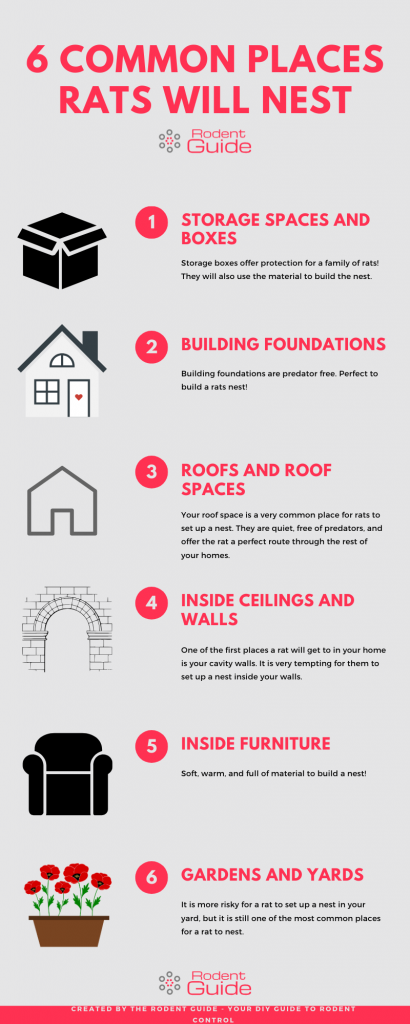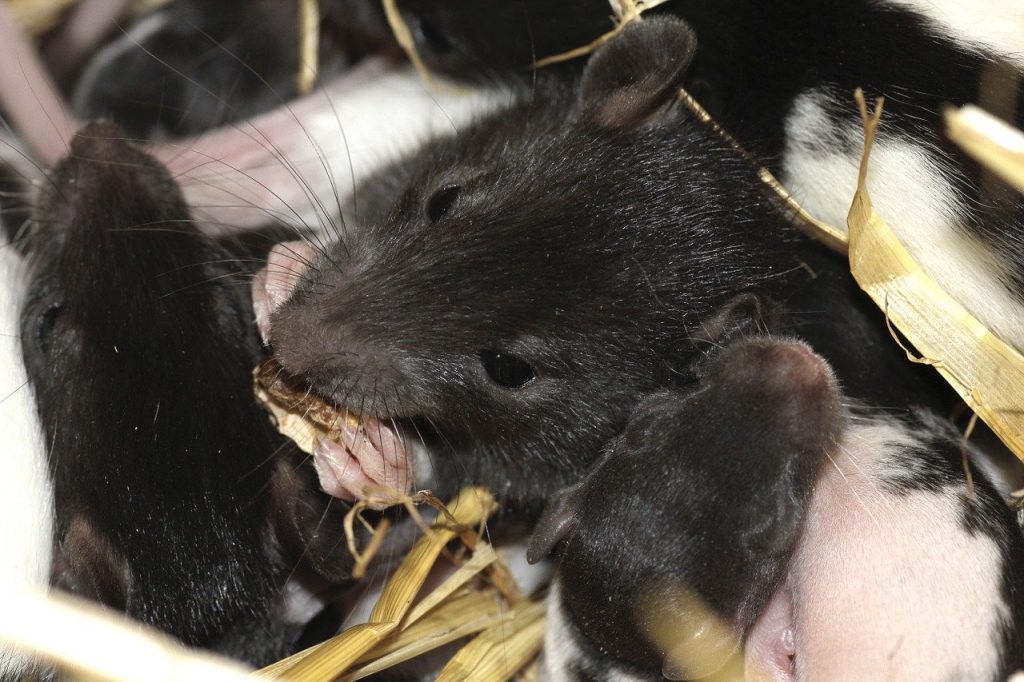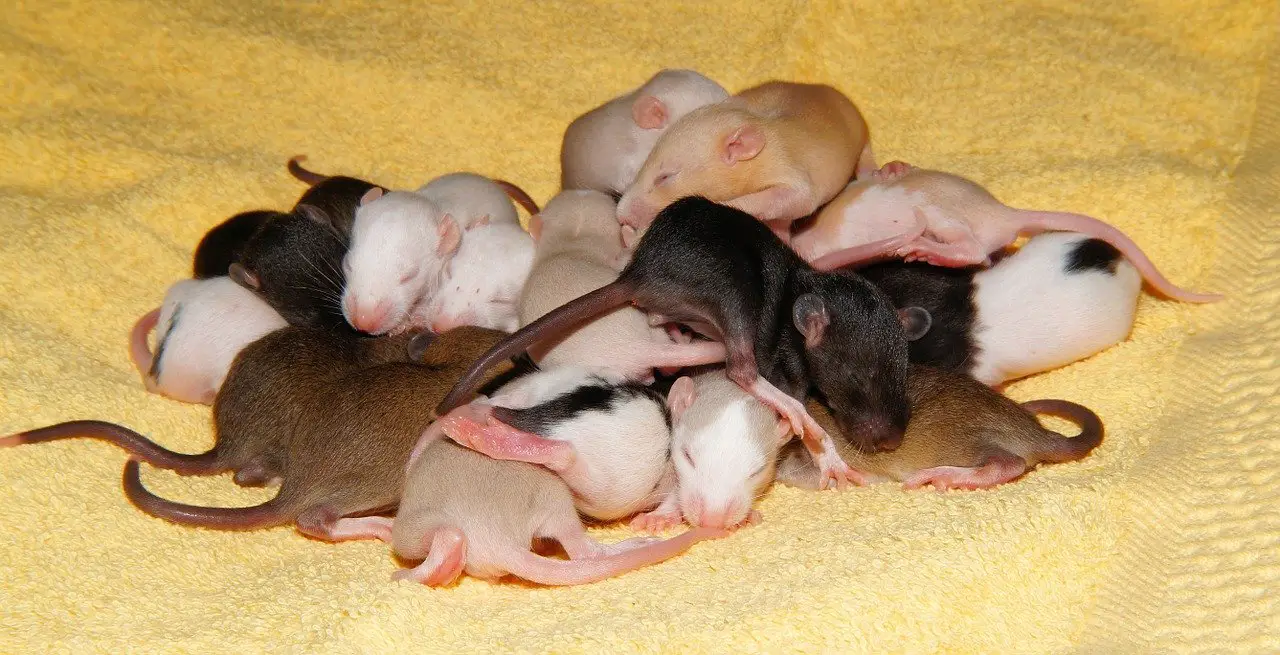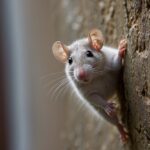Rats burrow and nest in various places and can adapt to different environments and conditions.
Nests are generally found where there is a food and water supply nearby. They often look for places to nest that are warm and provide shelter, just like most mammals.
Which leads to the question: where do rats nest?
Rats can nest in several places inside your home, including between walls and attics. Rats also nest outside in trees, piles of debris, and other locations.
Knowing where a rat’s nest is can be an important tool to help remove rats from your property and surroundings. Rats spread disease, and if you have a rat’s nest, the chances of contracting one increase!

Where Do Rats Nest? 6 Common Places

Storage Spaces and Boxes
A pantry, shed, garage or other space that you use for storage can prove to be an enticing spot for rodents to set up their home. These spaces provide a reliable food supply, especially if you store food for yourself or animals.
Storage spaces also provide rodents with easily accessible materials to build a nest, such as paper, wood, and cotton. Cardboard boxes are great for storing documents and other items, but they can provide a lot of material for rats to build a home.
A rat can nest inside boxes and other storage containers or close to them. Chewed holes in containers, food spread on shelves or floors, and rat droppings are signs that you may have a nest in your storage space.
Building Foundations
Holes or cracks in your property’s foundation can be an appealing invitation for a rat to enter your home. At the same time, rats that burrow in the ground can create a nest and a network of tunnels alongside the foundation.
In extreme cases, tunnels made by rodents can lead to structural damage or instability. This is one of the biggest reaons why rats are dangerous!
Rats that nest outside can eventually find themselves inside your property as their numbers grow.
Keep an eye out for new holes close to your property, which might signify that rats have set up a nest alongside the foundation.
Roofs and Roof Spaces
Rats often prefer to establish a permanent home when they decide to nest.
Since loft and roof spaces are dark and secluded areas that people and other potential predators rarely visit, these areas provide a safe shelter for rats.
It is important to monitor your attic or roof space and check for damage that rats might create or other signs of a rat infestation, such as rat droppings.
Rats can also set up a nest in gutters, under eaves, and under tiles or other roofing material that might be loose.
Inside Ceilings and Walls
Rats can nest in between walls and in crawlspaces within your property. They can enter a building using holes in walls and foundations, so it is not surprising that they will establish a nest inside a void found within a wall or ceiling.
Rats nesting in your roof or loft can also spread into ceilings, walls, and crawlspaces as the rodent family grows. Cavity walls, in particular, provide soft material for rats to build homes and are generally close to food within your property.
Inside Furniture
Some rats nest in cabinetry and furniture, including items found outside in your garden or yard.
Drawers and cabinets with potential nesting material such as paper are attractive spots to establish a nest, especially if the furniture has not been used for a long period of time.
Stacks of boxes can also encourage rats to nest. Keep an eye on old furniture for signs of a potential nest, including rat droppings, damage, and small debris.
Gardens and Yards
You can find rat nests in different places within your garden or yard. Rats nest above ground, even outdoors, including in trees and shrubs.
Trees provide added protection for nests, particularly taller trees. Rats are also attracted to overgrown yards and piles of debris, including wood and rubbish piles.
They may also establish a home close to any outdoor pond or other water feature.
Keeping outdoor spaces free of debris can be a good deterrent to rats.
FAQ

Do rats nest in the ground?
Rats are excellent diggers and will nest in the ground, especially if they cannot find a suitable home above or within your property. Rats will dig burrows to access their nests underground. A network of tunnels can connect the main nest and several escape holes. Underground tunnels and nests created by rats are often found alongside a building’s foundation, which can affect the structure and stability of your home or business. Rats can also nest under debris piles close to the ground, including wood piles.
Do rats nest in your home?
In houses, nests can often be found on lower levels of a building. They can also nest higher in lofts or roof spaces. Rats will generally nest in places that provide reliable shelter and warm conditions, although these are not certainties. They will also establish a nest close to water and food. Furniture, ceilings, walls, cabinets, and boxes are just some places a rat might nest in your home. Rats are generally not seen, so looking for other signs of rats in your home, such as droppings, is essential. Also, look for damage potentially caused by rats, such as holes or signs of chewing in walls, food, wires, and boxes.
How many rats will be in a nest?
Multiple rats often use nests and burrows, which makes it challenging to know the number of rats using a nest. There can be different nests that rats will move between. The more rats you have, the larger the main nest will be. Multiple rat families might also nest or burrow close to each other. You can have a single rodent nesting in your home, or you may have a family of up to 15 rats. In extreme cases, you may face a larger infestation that could include a couple of hundred rodents.
Conclusion
Rats are clever animals and can adapt to situations they might encounter or near your property. Hints that rats are nesting in or on your property include a rat burrow or hole.
An entrance to a rat’s nest is typically clear of debris. Stuffing paper to block the entrance is a good way to find if you have an active nest. If present, rats will clear the opening to a burrow or nest in a couple of days.
Keep an eye out for new holes, and any other damage rodents might create in areas where nests are generally found. That is an excellent way to flag the potential presence of an infestation.
Good luck!







